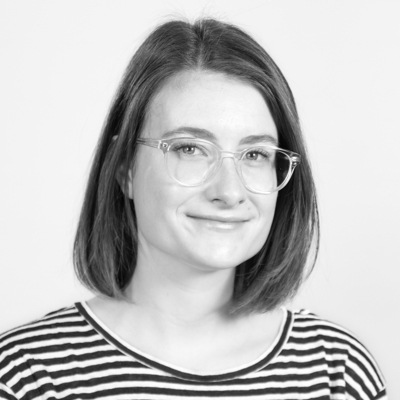What's the pink tax and how much does it cost women?
The extra charge on women's products can significantly impact how much women ultimately pay for products marketed toward them



Texas recently got rid of the so-called tampon tax, a sales tax on menstrual-cycle-related products like tampons and pads, making it the 25th state to do so, according to Kiplinger. But even if women in some states are no longer paying the tampon tax, they're still facing another type of upcharge: the pink tax.
While the pink tax isn't an actual tax like the tampon tax is, it can significantly impact how much women ultimately pay on products that are marketed toward them. Coupled with the gender pay gap, this can lead to further financial ramifications down the road.
What is the pink tax?
The pink tax refers to the "extra amount of money charged for certain products or services that are specifically marketed toward women," per The Balance. This can include everything from a "higher cost and often smaller sizes of products like women's razors, shampoo and deodorant, relative to the cost and size of similar personal hygiene products designed for men (e.g., when a pink razor costs more than a similar black or blue razor)" to "higher dry-cleaning or tailoring costs for women's clothing," according to Kiplinger.
The Week
Escape your echo chamber. Get the facts behind the news, plus analysis from multiple perspectives.

Sign up for The Week's Free Newsletters
From our morning news briefing to a weekly Good News Newsletter, get the best of The Week delivered directly to your inbox.
From our morning news briefing to a weekly Good News Newsletter, get the best of The Week delivered directly to your inbox.
Kids aren't exempt from the pink tax either. As reported by Kiplinger, there's evidence of "higher prices of toys or equipment marketed to girls, like pink bikes, scooters and helmets costing more than identical red or blue bikes, scooters and helmets." This price inflation, even if it seems small on scale, "can add up to women paying more than men over time," reported Bankrate.
When you apply via our links, we may earn an affiliate commission.
How much does the pink tax cost women?
According to Bankrate, citing an estimate by JPMorgan Chase, "the pink tax costs women an average of $1,300 per year." Another estimate, specific to women residing in California, was even higher. According to Kiplinger, "when California passed its pink tax ban, the state estimated that women paid more than $2,300 for goods and services marketed to them at higher prices than similar goods and services marketed to men. (That comes to about $188,000 over a woman's lifetime and about $47 billion for all of the women in California.)"
On average, women's products "cost 7% more than similar products for men, with the biggest gap found in personal care products, where women paid 13% more," Rocket Money reported, citing a 2015 study from the New York City Department of Consumer Affairs (DCA). Further, the DCA study found that 42% of the time, women pay more for their products, compared to only 18% for men, and only 40% of the time are prices equal, per Rocket Money's reporting.
A free daily email with the biggest news stories of the day – and the best features from TheWeek.com
Is there any way to avoid it?
States and businesses are starting to take steps to curb the pink tax. New York and California, as well as Miami-Dade County in Florida, have all passed laws against charging more for products marketed toward different genders, Bankrate reported. Additionally, CVS has made moves against the pink tax, lowering prices on branded feminine care products and waiving sales tax on those products in states where they were permitted, reported Kiplinger. Still, there remains a federal ban on the pink tax despite repeated efforts to introduce the Pink Tax Repeal Act in Congress, per Kiplinger.
In the meantime, consumers can take the following steps to prevent the pink tax from impacting their bottom line:
- Gain an awareness of which products are overpriced.
- Shop around for the best deal, comparing prices across different brands and stores, as well as the men's vs. women's sections.
- Opt to purchase more gender-neutral items when shopping in certain categories, such as toys and shampoos.
- Consider buying the men's-marketed products instead, especially if it's functionally the same but cheaper.
Becca Stanek has worked as an editor and writer in the personal finance space since 2017. She has previously served as the managing editor for investing and savings content at LendingTree, an editor at SmartAsset and a staff writer for The Week. This article is in part based on information first published on The Week's sister site, Kiplinger.com.
New tax rules for 2023: Download your free issue of The Kiplinger Tax Letter today. No information is required from you.
Becca Stanek has worked as an editor and writer in the personal finance space since 2017. She previously served as a deputy editor and later a managing editor overseeing investing and savings content at LendingTree and as an editor at the financial startup SmartAsset, where she focused on retirement- and financial-adviser-related content. Before that, Becca was a staff writer at The Week, primarily contributing to Speed Reads.
-
 The elite falcon trade in the Middle East
The elite falcon trade in the Middle EastUnder the Radar Popularity of the birds of prey has been ‘soaring’ despite doubts over the legality of sourcing and concerns for animal welfare
-
 A running list of the international figures Donald Trump has pardoned
A running list of the international figures Donald Trump has pardonedin depth The president has grown bolder in flexing executive clemency powers beyond national borders
-
 Mixed nuts: RFK Jr.’s new nutrition guidelines receive uneven reviews
Mixed nuts: RFK Jr.’s new nutrition guidelines receive uneven reviewsTalking Points The guidelines emphasize red meat and full-fat dairy
